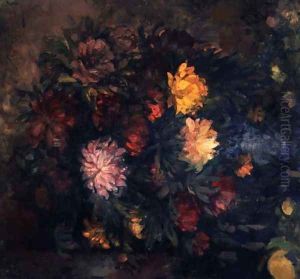Nikolaj Nikolaevic Sapunov Paintings
Nikolaj Nikolaevic Sapunov was a notable Russian artist, born on June 8, 1880, in Moscow. He was a prominent figure in the Russian avant-garde movement, particularly known for his contribution to the Mir Iskusstva (World of Art), an influential art magazine and artistic movement that played a pivotal role in the development of Russian art during the late 19th and early 20th centuries.
Sapunov studied at the Moscow School of Painting, Sculpture, and Architecture where he was a student of esteemed artists such as Abram Arkhipov and Valentin Serov. His style was initially influenced by Russian folk art and Neo-Primitivism, but he later developed an affinity for Art Nouveau and Symbolism, which can be seen in his fluid lines and ornamental approach to his subjects.
Sapunov's artistic career was marked by a diverse range of works that included set designs for theater, illustrations for books, and paintings. He was deeply involved with the theatrical world and collaborated with directors like Vsevolod Meyerhold and artists like Alexander Golovin and Konstantin Korovin, contributing significantly to the stage aesthetics of his time. His set designs were known for their inventive use of color and space, which added a new dimension to the Russian theater.
Unfortunately, Sapunov's life and career were cut short when he tragically drowned during a boating accident on June 6, 1912, at the young age of 31. Despite his brief career, he left behind a legacy that reflected the innovative spirit of the early 20th-century Russian art scene. His works are preserved in various art museums and private collections, serving as a testament to his artistic vision and the cultural ferment of the period in which he lived and worked.
